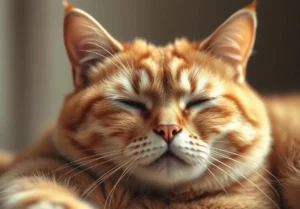Cats are known for their incredible ability to vanish into thin air, leaving owners scratching their heads and searching high and low. But why are cats so good at hiding? The answer lies in their unique evolutionary traits and behaviors.
Natural Instincts
Cats have been master hiders for centuries, thanks to their incredible natural instincts. Survival is the name of the game for these clever creatures, and their instinct to hide is deeply ingrained in their DNA. Back in the wild, hiding was essential to escaping predators and sneaking up on prey. Even though our fluffy friends are now domesticated, these instincts remain strong.
One fascinating aspect of cats’ natural instincts is their ability to sense danger before we even know it exists. Their sharp senses help them detect potential threats, prompting them to find the nearest hideout in a matter of seconds. It’s like they have a built-in radar system constantly scanning their environment for any sign of trouble.
Cats’ agility and flexibility also come into play when it comes to hiding. Their nimble bodies can contort and squeeze into the tightest spaces, making them practically invisible to the naked eye. So, next time you can’t find your furry friend, remember – it’s all part of their natural instinct to stay safe and sound.
Camouflage Techniques
When it comes to blending in with their surroundings, cats are true masters of disguise. Their fur patterns and colors play a key role in helping them disappear into the background. For example, a tabby cat with stripes can easily blend in with tall grass, while a Siamese cat’s coloration helps it disappear against light-colored walls.
One of the most fascinating camouflage techniques cats use is called “countershading.” This is when their fur is darker on top and lighter on the bottom, which helps create a visual illusion that makes them harder to spot. It’s like they’re wearing their very own invisibility cloak!
Additionally, cats have specialized cells in their skin called melanocytes that can change the color of their fur based on their environment. This incredible adaptation allows them to adjust their camouflage on the fly, making them even more elusive. So, next time you see your cat magically blend in with the furniture, you’ll know it’s all thanks to their clever camouflage techniques.
Small and Agile
Cats possess a remarkable ability to squeeze into the tiniest of spaces due to their compact size. Their flexible bodies allow them to contort and fit into crevices and corners that would be impossible for larger animals. This agility comes in handy when they need to hide from perceived threats or simply seek a cozy spot for a nap. Their small size gives them a big advantage when it comes to staying out of sight.
Silent Stalkers
Cats are stealthy creatures thanks to their padded paws and muscular build, enabling them to move with barely a whisper. Their silent footfalls allow them to approach unnoticed, whether they’re on the prowl for prey or simply trying to evade detection. Combined with their keen senses and sharp reflexes, cats become expert hide-and-seek champions, effortlessly blending into their surroundings. This stealthiness is a key factor in their ability to disappear at a moment’s notice.
Unique Insight: Their Whiskers as Navigational Aids Cats’ whiskers aren’t just cute accessories; they serve a practical purpose. These sensitive hairs help cats navigate through tight spaces without bumping into objects. When a cat’s whiskers brush against surfaces, it sends signals to their brain, alerting them to potential obstacles. This added sensory tool enhances their ability to move stealthily and hide effectively in various environments.
Strategic Hideouts
Cats are masters of finding the perfect hiding spots that suit their natural instincts. Whether it’s high perches for a bird’s-eye view of their surroundings or cozy cubbyholes for a sense of security, cats are drawn to strategic hideouts that offer them comfort and a sense of safety. These spots allow them to observe without being seen, which is essential for their survival instincts as both predators and prey in the wild.
Fearful or Curious?
Have you ever wondered why your cat seems to vanish into thin air when a stranger enters the room? Cats often hide not out of fear, but rather out of a natural sense of curiosity. They are naturally cautious creatures, and their elusive behavior stems from a combination of their keen sense of exploration and their desire to observe without being observed. So, the next time your feline friend disappears out of sight, remember that it’s likely just satisfying their curiosity rather than hiding out of fear.
Strategic Hideouts: 1. Under Furniture: Cats love to hide under furniture like beds and sofas, where they can feel secure and escape from any potential threats. 2. High Perches: Climbing to high places allows cats to survey their surroundings and keep a watchful eye on anything that may be moving nearby. 3. Cozy Cubbyholes: Small spaces like boxes or closets provide cats with a snug and secure hiding spot where they can feel protected.
Whether your cat is seeking refuge in a cozy corner or perched atop a bookshelf, their natural ability to find the perfect hiding spot is a testament to their innate instincts for survival and curiosity.
Playful Prowess
Cats are masters of stealth and cunning, making them experts at hiding in plain sight. Their natural instinct to play and explore fuels their affinity for finding sneaky hiding spots. Whether it’s darting under the bed or perching on a high shelf, cats love the thrill of the hunt, even if they’re just hiding from you during a game of hide and seek. This playful prowess not only keeps them entertained but also sharpens their survival skills, allowing them to disappear at a moment’s notice when danger lurks.
Mental Stimulation
Hiding and seeking activities provide essential mental stimulation for our feline friends. Cats are intelligent creatures that require mental engagement to stay sharp and happy. By hiding in various locations and seeking out hidden treasures (or treats), cats exercise their minds and hone their hunting instincts. This mental stimulation not only prevents boredom but also encourages healthy behaviors and reduces stress. So next time you can’t find your cat, remember they’re not just playing hide and seek – they’re keeping their minds active and agile.
Unique Insight:
Curious Camouflage : Cats’ natural camouflage abilities, coupled with their keen sense of observation, make them experts at blending into their surroundings. Their coat colors and patterns help them disappear into the environment, enhancing their hiding capabilities. So the next time your cat seemingly vanishes into thin air, remember their natural talent for staying hidden.
Fun Facts
Unveil some surprising tidbits about cats’ disappearing acts that will leave you in awe of their stealthy skills.
Cats have specialized hiding fur that makes them blend seamlessly into their surroundings. It’s like nature’s own camouflage!
Their whiskers are not just for show – they help cats navigate in the dark and sense objects around them, allowing for swift escapes.
Cats have retractable claws that aid in both climbing and staying hidden. Just when you think they’re cornered, they vanish like magic!
Did you know that cats are crepuscular animals? This means they’re most active during dawn and dusk, perfect for prowling and pouncing undetected.
Curious about why cats seem to always find the perfect hiding spot? It’s all about their keen sense of hearing and incredible agility, allowing them to slip away unnoticed in the blink of an eye.
Keep these fun facts in mind next time you marvel at your mysterious feline friend’s disappearing act!
Alex, a passionate animal lover, has experience in training and understanding animal behavior. As a proud pet parent to two dogs and three cats, he founded AnimalReport.net to share insights from animal experts and expand his knowledge of the animal kingdom.




